Asian Leafy Greens

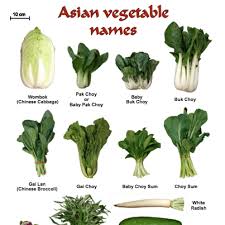
How many Asian leafy greens have you
cooked and/or eaten before?
There are many Asian vegetables & herbs in our range so let's have a look at some of the leafy greens. Asian cooking is such a big part of our cuisine in NZ now, ranging from Indian to Chinese, Vietnamese, Korean, Japanese and everything in-between. Just look at the greens available in your local vege stores and notice how the range offered is increasing all the time. In earlier times, before the merging of Asian and Western cultures, leafy greens were traditionally cooked. With modern day culinary transformations and the introduction of the western salad many of the Asian greens are used in their raw form to diversify the tastes and textures of today's salad greens.
Most Asian greens are fast to grow and can be harvested as a microgreen, at baby leaf stage or fully mature. They require a little experimenting to establish the seasons they can be grown in your particular growing environment but most can be grown for most of the year and in a greenhouse environment over the winter.
Cabbage 1kilo Slowbolt
(also known as Wong Bok)
There is no evidence of a wild chinese cabbage in history, so the vegetable we know today is probably a cross between bok choy and a turnip. It has a mild sweet flavour and is the cabbage most commonly used to make the Korean pickle, kim chee. Use it in your salads or stir-fries and also to use to wrap other food. It is a great cabbage to use for a sweeter, crinklier coleslaw or to provide some crispness when used with other salad greens.

Tat soi
This is a version of a flat cabbage used in both Chinese and Japanese cuisine. It grows only a few inches from the ground and has white stems. It is usually sold as young leaves when the flavour is delicate and there is a sweet juiciness. It tastes similar to bok choy. A nice way to serve Tat soi is mixed with other salad greens or serve on its own with a hot (as in cooked) asian sauce that will just wilt the leaves slightly.
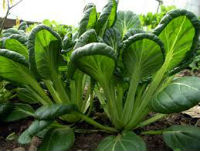
Water Spinach Bamboo Leaf
This leafy spinach like vegetable is very popular for Chinese cuisine, mainly due to the pointy leaves that wilt quickly and the hollow stems that trap any flavour added when cooking. Garlic is usually included when cooking this particular green. The flavour is sweet and delicate and best cooked a little even when being added to a salad. It is a vigorous grower that is best picked just prior to using as it doesn't tend to store well.
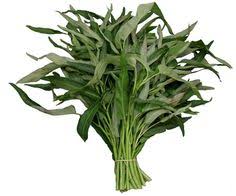
Shiso
(also known as Perilla)
There is evidence that Shiso has been grown since 500AD in China and was introduced into western culture much later as an ornamental. It grows as high as a metre and has a large flat leaf with serrated edges. There are both red and green varieties and many of our microgreen growers like to grow both colours.
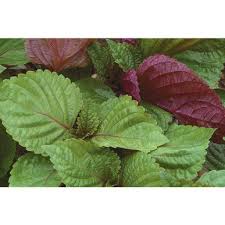
Shiso is used as a herb or to wrap food in Japanese, Vietnamese and Korean cuisine. It adds a nice dimension when added to a salad and tends to have a hint of minty or cinnamon flavour. It can also be served as tempura.
Shungiku
This is the Japanese name for chrysanthemum greens and therefore it is no surprise that the characteristics are of an edible chrysanthemum. The version we have available is an annual with a small serrated edge leaf that becomes more bitter the bigger it grows but beware because it is frost tender so best covered over winter. The leaves are the best part to use and the petals of the flowers can also be used in dishes. In China, Shungiku is known as Tung hao or Tung ho and as a humble vegetable was found in 'chop suey' which was the name given for the leftovers given to the poor by restaurants.

Mizuna
This brassica with its feathery spiky leaves looks a lot like wild rocket/arugula but has a much milder and sweeter taste with juicy stalks. In the mixed leaf salads served or sold today, there is usually a bit of Mizuna in the mix as it is an excellent salad green. You will also find it in lots of mesclun mixes. Due to its hardiness, fast growing and cut and come again habit it is great as a winter green.
Mibuna is a similar green to Mizuna but has long flat spoon shaped leaves on a long stem.
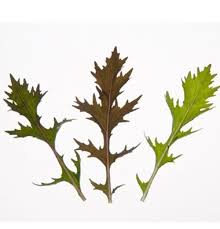
Chinese Broccoli
(also known as Gai Lan)
Every part of this broccoli is edible and delicious - leaves, stems, buds and flowers. If the stems are a little tough just peel them for the sweet crunchy inner. It can be used in any dish that has broccoli in it. It is easy and fast to grow and best harvested before too many of the flower buds open. If you love stemmed broccoli (known as "broccolini" in many supermarkets and vege stores) try this Chinese Broccoli too.
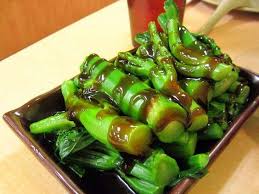
Cooking with leafy greens
There are many good reasons for adding Asian greens regularly to your diet. They are a nutritious source of many vitamins and minerals. Cooking these greens is great for the time-poor as they cook very quickly and can be ready to put on the plate with minimal fuss. All of the above varieties can be steamed, stir-fried, sauteed, added to salad greens and soups, used to wrap and cook a filling. The uses are infinite.
When I am cooking Asian greens I tend to keep it simple so as to make the most of the different flavours of the greens. Basic ingredients that I always have on hand to pick from for cooking or making a dressing are:
Salt/pepper Stock Garlic Ginger Oyster, soy & fish sauce Shrimp paste Peanut oil Sesame oil Honey Lemons/limes Chilli
Use as many or as few of these according to your preferences. I tend to start with the stock or oils, add honey if sweetness required and add a sauce at the end to heat through. Experiment to find your favourites.
Here is a range of Asian vegetables we have written about in our blogs previously (just click on the title):
We will also be profiling selected Asian vegetables in our spring newsletters.






















































